Author: Cade Jobe
Sour beer has seen a rise in popularity over the years, though it remains a relative novelty, which is interesting considering it’s been around since the advent of brewing proper. In fact, there’s a high likelihood most of the beers brewed historically possessed some level of acidity due to lacking knowledge about microbes and sanitation. As science progressed, brewers gained the ability not only to brew “clean” styles, but also intentional sour beers through the use of microbes, most notably the bacteria called Lactobacillus.
Wild yeast and bacteria are all around us and live on pretty much everything, which allows brewers to sour the wort they produce by leaving it exposed to the open air or adding certain things to it such as brewing grains. While effective at acidifying wort, some brewer’s avoid this method due to the lack of control, as grains can also contribute wild yeast and other microbes that impact beer character. As such, many yeast labs offer pure cultures of Lactobacillus strains that offer more precision, predictability, and consistency, though some have claimed leads to a less complex finished product.
Traditionally, sour beers required a decent amount of time to allow the microbes to do their thing, though more recently, many have adopted the kettle sour approach, which involves adding the souring microbes to pasteurized wort and holding it at a warm temperature for as little as 18 hours. Having successfully used pure Lacto cultures and grains for souring in the past, I was curious of how each would compare and designed an xBmt to test it out!
| PURPOSE |
To evaluate the differences between a Straight Sour Beer soured with a pure Lactobacillus culture and one soured with a handful of grains.
| METHODS |
I designed an experimental sour Pale Ale recipe for this xBmt.
Two In The Bush
Recipe Details
| Batch Size | Boil Time | IBU | SRM | Est. OG | Est. FG | ABV |
|---|---|---|---|---|---|---|
| 5.5 gal | 60 min | 44.1 | 4.8 SRM | 1.04 | 1.006 | 4.46 % |
| Actuals | 1.04 | 1.006 | 4.46 % | |||
Fermentables
| Name | Amount | % |
|---|---|---|
| Pale Ale Malt 2-Row | 8 lbs | 86.49 |
| Wheat Malt | 10 oz | 6.76 |
| Wheat Soft Red, Flaked | 10 oz | 6.76 |
Hops
| Name | Amount | Time | Use | Form | Alpha % |
|---|---|---|---|---|---|
| Hallertau Magnum | 20 g | 60 min | Boil | Pellet | 12 |
| Centennial | 20 g | 10 min | Boil | Pellet | 6.1 |
| Loral | 20 g | 10 min | Boil | Pellet | 10.5 |
| Centennial | 30 g | 3 days | Dry Hop | Pellet | 6.1 |
| Loral | 30 g | 3 days | Dry Hop | Pellet | 10.5 |
Yeast
| Name | Lab | Attenuation | Temperature |
|---|---|---|---|
| Independence (A15) | Imperial Yeast | 76% | 32°F - 32°F |
| IY W25 Lacto. Brevis OR Grains | 83% | 32°F - 32°F |
Notes
| Water Profile: Ca 168 | Mg 19 | Na 8 | SO4 368 | Cl 59 |
Download
| Download this recipe's BeerXML file |
I started my brew day by collecting the full volume of water for each batch, adjusting both to my desired mineral profile, then setting the electric controllers to heat them up.
With the waters properly heated, I added identical amounts of the same grains to each batch, turned the pumps on to recirculate, and set the controllers to maintain my intended mash temperature of 152°F/67°C.
Once each 60 minute mash rest was complete, I removed the grains then raised the worts to 170°F/77°C and held them at this temperature for 5 minutes to pasteurize, after which I chilled each to 105°F/41°C. At this point, I pitched a pouch of Imperial Yeast W25 Lactobacillus Brevis into one batch while the other received a handful of uncrushed pale malt that I placed in a sanitized fabric bag.
I left the pumps on to recirculate both batches for 24 hours before returning to find the batch hit with the Lacto culture was noticeably less tart than the one with grains. I then set the controllers on to heat the worts and prepared the kettle hop additions.
The worts were boiled for 60 minutes with hops added at the times listed in the recipe.
When the boils were complete, I quickly chilled the worts then took hydrometer measurements showing the Lacto culture batch was 0.002 SG points higher than the batch soured with grains.
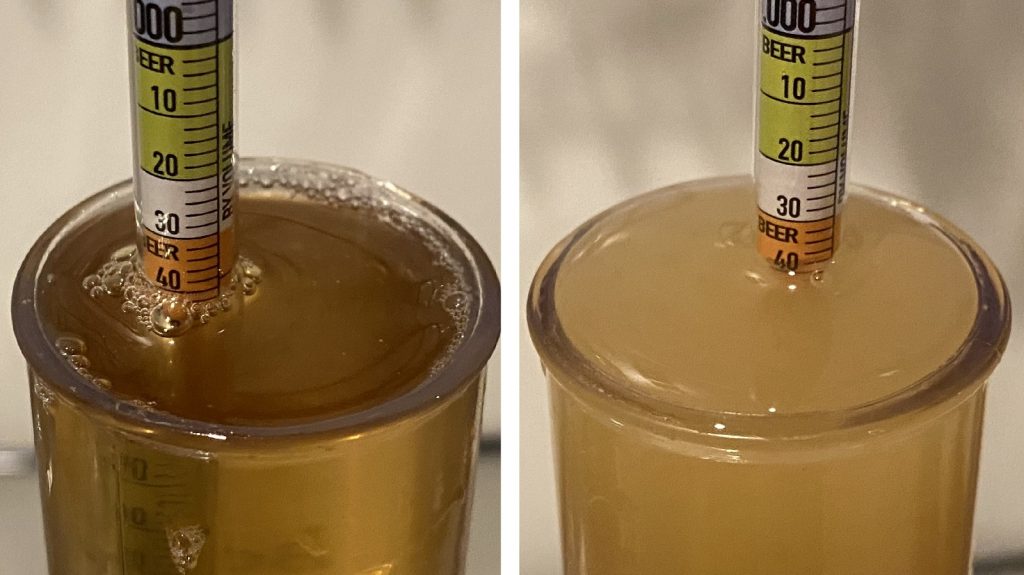
After transferring the worts to sanitized Brew Buckets, they were placed next to each other in my fermentation chamber and I pitched a single pouch of Imperial Yeast A15 Independence into each.
The beers were left to ferment at 66°F/19°C for 8 days before I returned to take hydrometer measurements indicating a 0.003 SG difference.
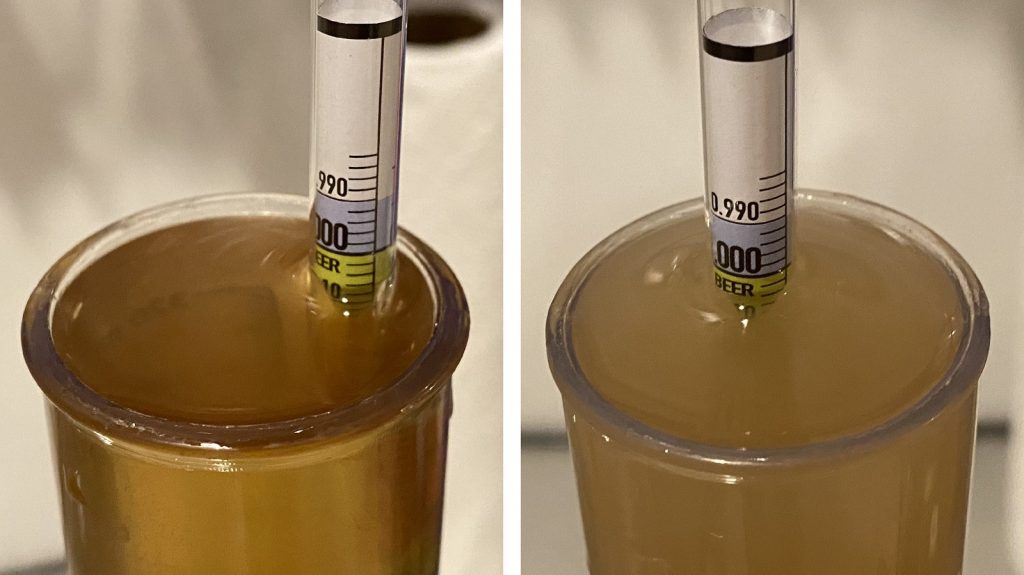
I also took pH measurements of each beer as an objective measure of acidity and found there to be a rather stark difference.
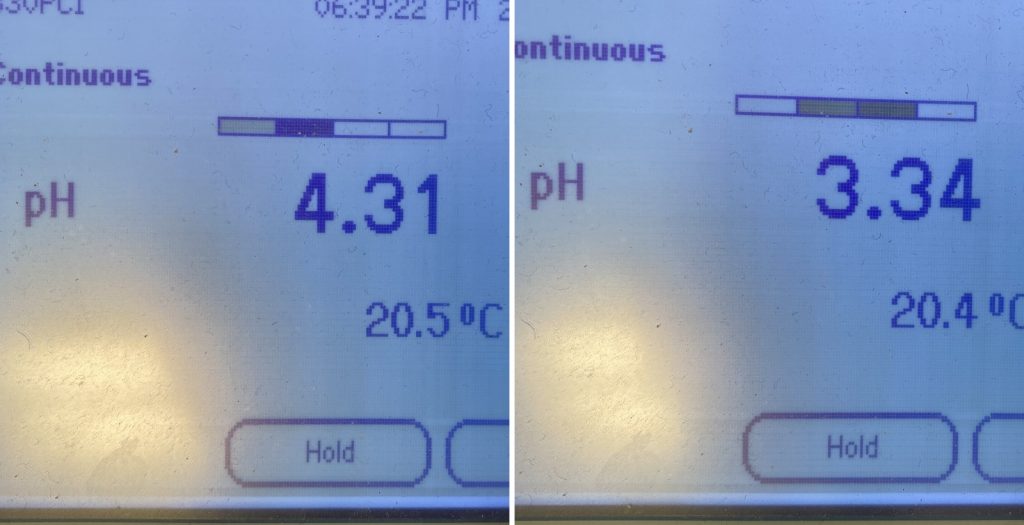
At this point, the beers were pressure transferred to CO2 purged kegs that were placed on gas in my keezer and allowed to condition for a couple of weeks before they were ready for evaluation.
| RESULTS |
A total of 33 people of varying levels of experience participated in this xBmt. Each participant was served 1 sample of the beer soured with a pure Lactobacillus culture and 2 samples of the beer soured with grains in different colored opaque cups then asked to identify the unique sample. While 17 tasters (p<0.05) would have had to accurately identify the unique sample in order to reach statistical significance, 29 did (p<0.00001), indicating participants in this xBmt were able to reliably distinguish a beer soured with Imperial Yeast W25 Lactobacillus Brevis from one soured with a handful of grains.
The 29 participants who made the accurate selection on the triangle test were instructed to complete a brief preference survey comparing only the beers that were different. A total of 5 tasters reported preferring the beer made with the pure Lacto culture, 21 said they liked the beer soured with grains more, and 3 had no preference despite noticing a difference.
My Impressions: Out of the 8 semi-blind triangle tests I attempted, I correctly identified the odd-beer-out every time… easily. The beer soured with a handful of grains was dramatically more sour than the one dosed with the pure Lacto culture, which had only mild acidity. While both beers were enjoyable, I preferred the beer soured with grains, as I enjoy a more assertive acidity in sour beers.
| DISCUSSION |
Sour beer not only offers drinkers a unique experience, but gives the brewer a challenge compared to making standard clean styles. While traditional souring methods tended to take a good amount of time, many modern brewers rely on quicker methods such as kettle souring, which involves adding microbes to pasteurized wort and holding it at a warm temperature for a relatively short amount of time. The most common souring microbe is Lactobacillus, which can be sourced in its pure form from yeast labs, or imparted through the use of exogenous products such as brewing grains. Confirming the claims of many, tasters in this xBmt were able to reliably distinguish a beer soured with Imperial Yeast W25 Lactobacillus Brevis from one soured with a handful of grains.
In considering possible explanations for this result, the most obvious seems to be that more than just Lactobacillus are on grains, which may have contributed to the quicker souring observed in the batch dosed with a handful of grains. It’s also likely the beer soured with grains was impacted by wild yeast, as a number of tasters noted the beer soured with a pure Lacto culture to be less complex.
A simple internet search on souring with grains results in a number of horror stories from brewers who report their beer ended up having disgusting off-flavors including baby vomit and sweaty sock. Indeed, this approach is undeniably less predictable than pitching a pure Lacto culture, but given the success I’ve had with it in the past and the fact I preferred the beer soured with grains in this xBmt, it’s definitely something I plan to continue doing in the future when making quick turnaround sour beers.
If you have any thoughts about this xBmt, please do not hesitate to share in the comments section below!
Support Brülosophy In Style!
All designs are available in various colors and sizes on Amazon!
Follow Brülosophy on:
FACEBOOK | TWITTER | INSTAGRAM
If you enjoy this stuff and feel compelled to support Brulosophy.com, please check out the Support page for details on how you can very easily do so. Thanks!


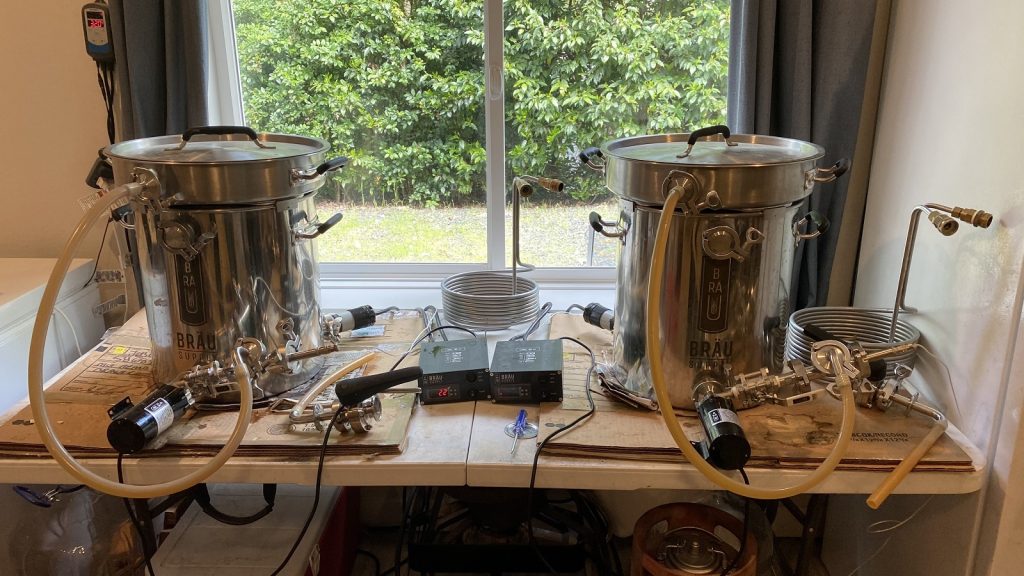
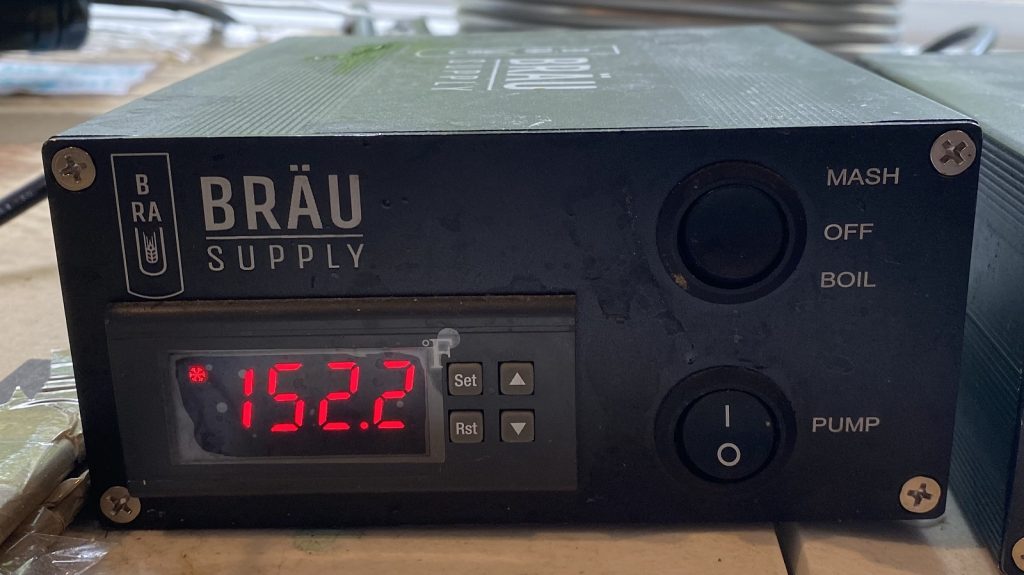
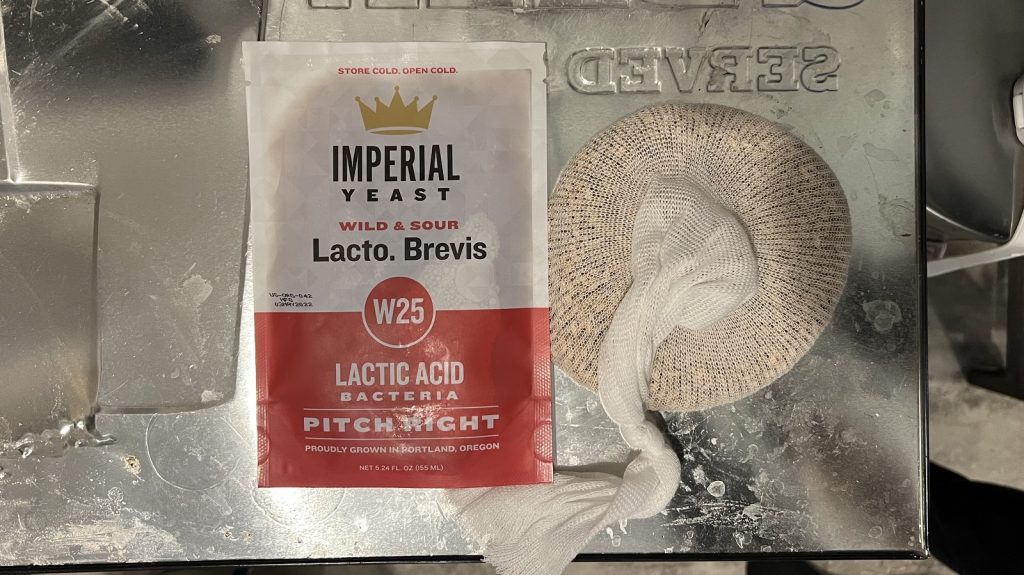
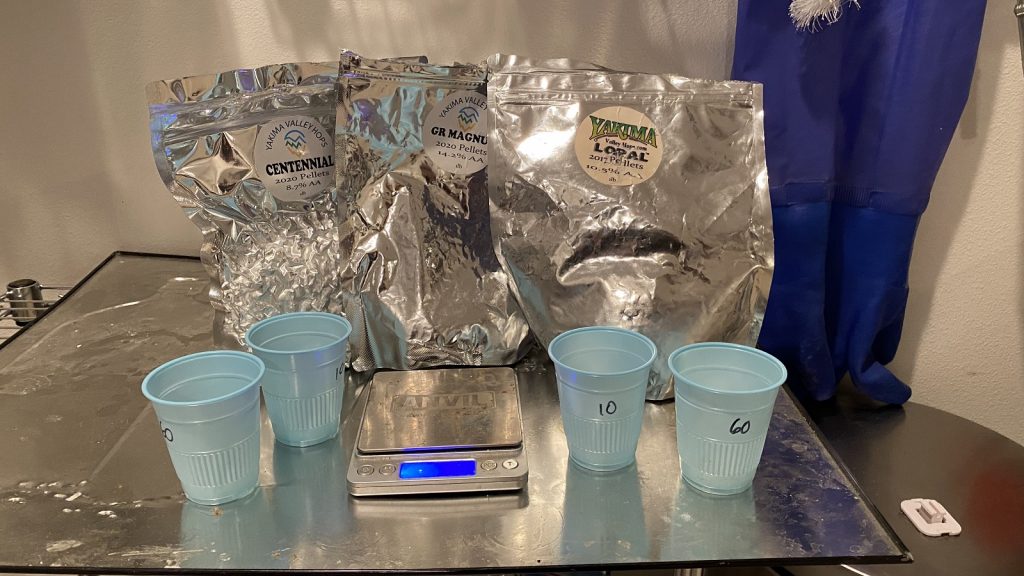
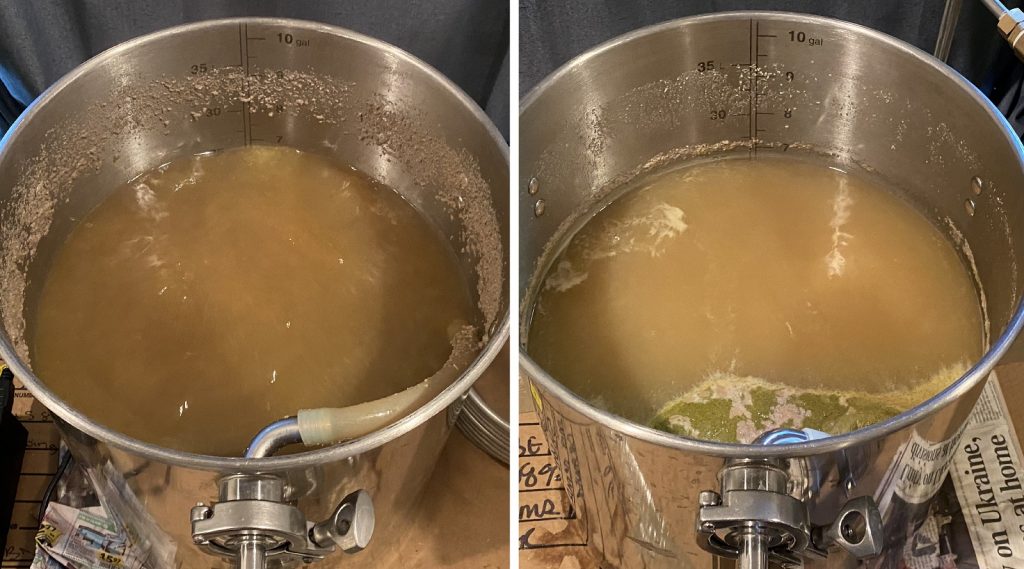
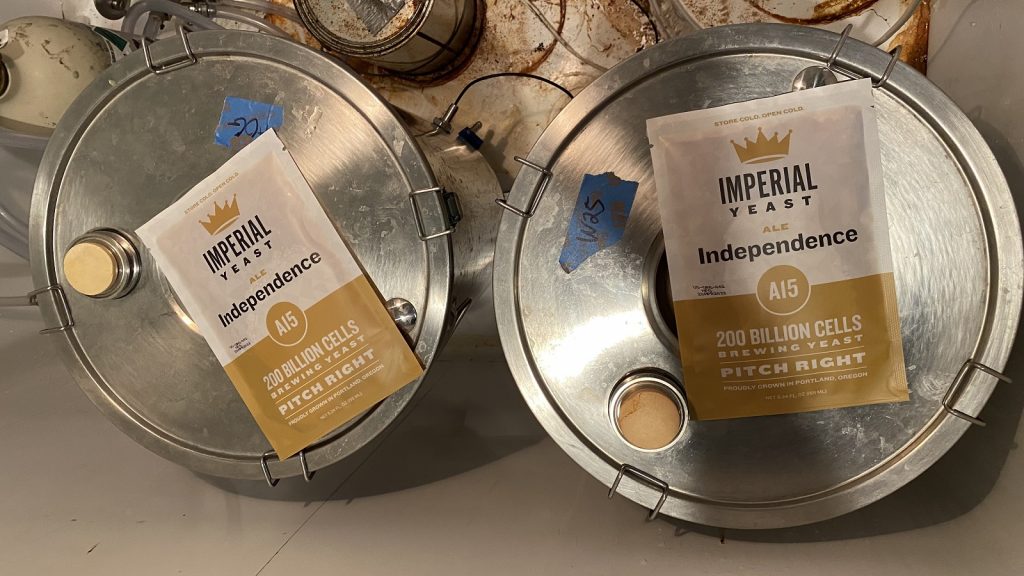






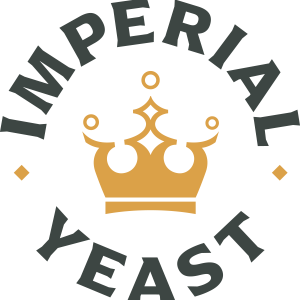

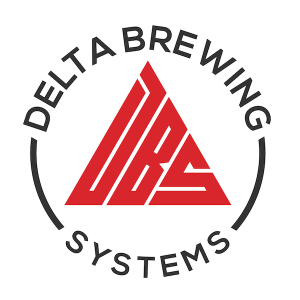


9 thoughts on “exBEERiment | Sour Beer: Imperial Yeast W25 Lactobacillus Brevis vs. Grains In A Straight Sour Beer”
This might be the most aggressively bad comparison in a while. This experiment should have been rebrewed with proper temperature and technique the moment the pH difference was noticed. This is not a proper comparison of pure culture vs. grains. I used a L. plantarum culture for my sour beers and I consistently get below 3.5pH in less than 24 hours.
Yep, agreed, the experiment is completely void. pH should have been measured before and after adding the lacto culture and it would have been obvious at that point that nothing had happened. Lactobacillus cultures need to be looked after – these are living organisms, not fire-and-forget additives.
I understand where you’re coming from. Please rest assured this was just an initial xBmt; we’ve plenty more coming in the future.
Lacto Brevis is hop intolerant, so adding hops to the recipe basically killed off the lacto. For a true comparison you need to brew an un-hopped batch then sour each individually.
I’m not a sour beer brewer, but it looks to me like something went wrong with your pure culture. The finished beer pH on that one (4.3) is in line with what the internet claims is normal beer pH, as well as what previous Brulosophy pH experiments have shown for final beer pH. Did you happen to check the pH after the souring but before the boil?
I’m curious about your choice of souring temp, which was higher than the range that Imperial lists on their website. Perhaps it was just a little too warm for those bugs to do their thing?
I agree, my beer usually has a 4.3 pH after fermentation, so the take away from this xBmt is that Lactobacillus Brevis from Imperial is a scam?
Might have just gone a little early with this one as Imperial quote 1-4 days for souring using this culture. Interesting to see the grains let loose here without pre-acidification to somewhat safeguard against undesireable bacteria.
Any particular reason you chose 105* for the souring temp instead of something more in the recommended range for Brevis? I normally kettle sour with powdered Plantarium, which I think I’ve heard is less temperature sensitive, and definitely got down to 3.2pH last time at 98* or so over 24hrs. If anything, this does suggest the wild microbes maybe less temperature sensitive than a lab culture?
Also, on your wild yeast comment in the Discussion, do you think they were active in the fermenter or just in the wort souring 24hrs? My unscientific impression was that a small amount of wild yeast wouldn’t be able to do much in 24hrs, whereas bacteria that propagate much faster than yeast obviously could/did do something. Could it have just been more diversity in the wild lacto cultures that gave it more complexity?
My normal process with kettle sours is to use Omega OYL – 605 Lactobacillus Blend and sour for approximately three days at indoor room temperature. I’ll do the mash and add the lacto on Wednesday evening and then finish the boil and pitch the yeast on Saturday. I routinely achieve a pH in the 2.75 – 3.0 range this way.